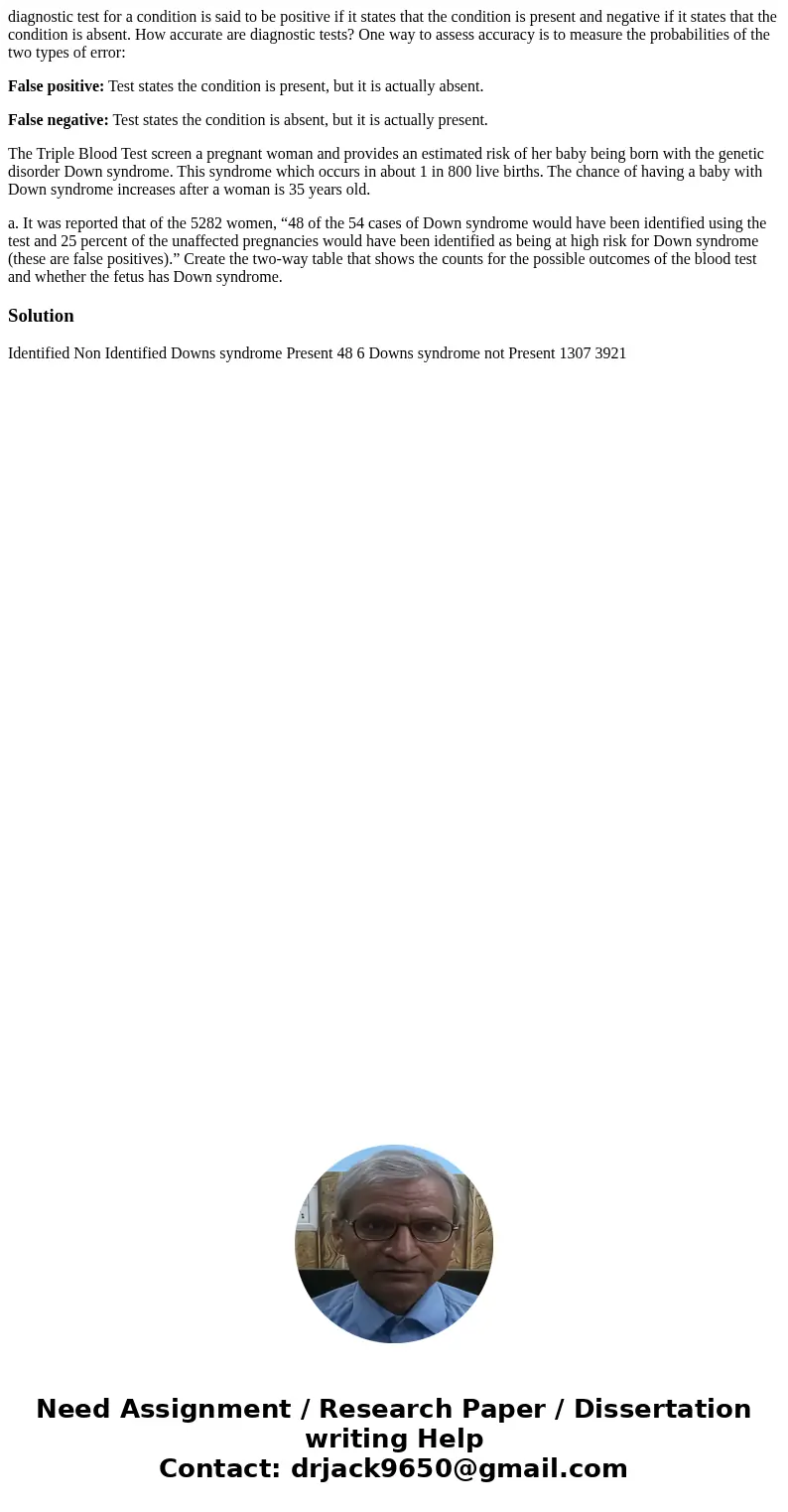diagnostic test for a condition is said to be positive if it
diagnostic test for a condition is said to be positive if it states that the condition is present and negative if it states that the condition is absent. How accurate are diagnostic tests? One way to assess accuracy is to measure the probabilities of the two types of error:
False positive: Test states the condition is present, but it is actually absent.
False negative: Test states the condition is absent, but it is actually present.
The Triple Blood Test screen a pregnant woman and provides an estimated risk of her baby being born with the genetic disorder Down syndrome. This syndrome which occurs in about 1 in 800 live births. The chance of having a baby with Down syndrome increases after a woman is 35 years old.
a. It was reported that of the 5282 women, “48 of the 54 cases of Down syndrome would have been identified using the test and 25 percent of the unaffected pregnancies would have been identified as being at high risk for Down syndrome (these are false positives).” Create the two-way table that shows the counts for the possible outcomes of the blood test and whether the fetus has Down syndrome.
Solution
Identified Non Identified Downs syndrome Present 48 6 Downs syndrome not Present 1307 3921
 Homework Sourse
Homework Sourse